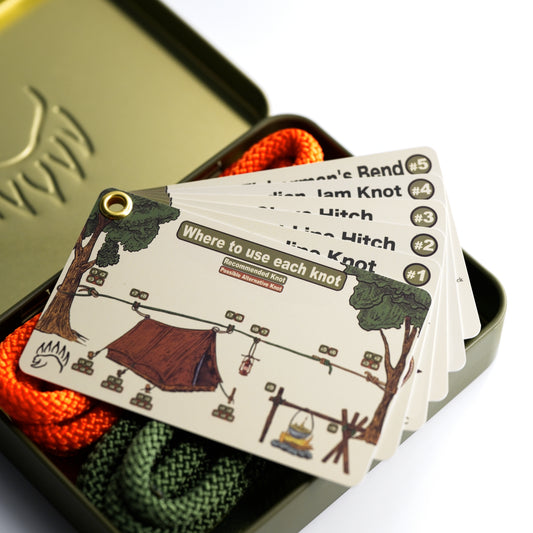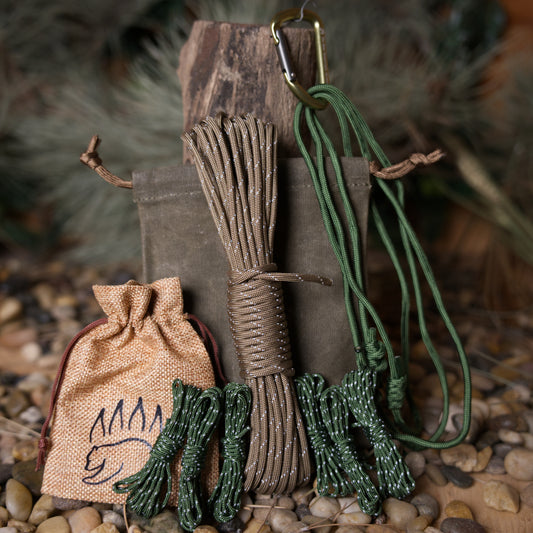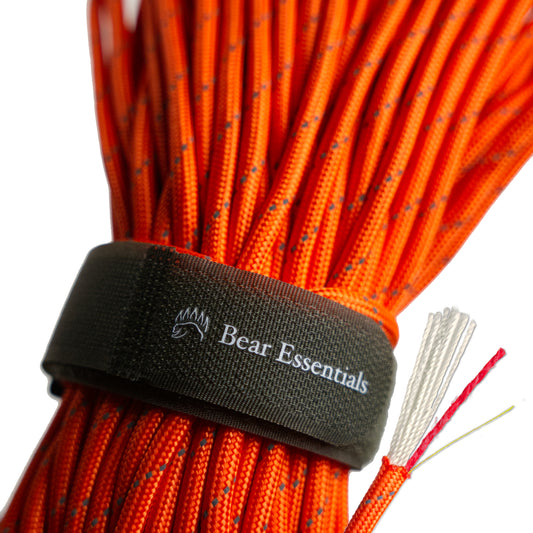How to Tie the Double Clove Hitch
Usage
The Double Clove Hitch is commonly used to securely tie a rope to a pole or post, particularly in camping, boating, and utility tasks. Compared to the standard Clove Hitch, which can slip under variable loads, this variation adds a second hitch for enhanced stability, making it ideal for prolonged securing. Its simple structure suits quick setups, but it may bind tightly after heavy tension. This knot is a reliable choice for fastening ropes.
Why Learn the Double Clove Hitch?
Its double-hitch design ensures a stronger hold. This knot is a practical choice for outdoor and utility tasks needing secure rope attachment.
Common Uses
-
Hoisting:
- Secures ropes to poles for lifting equipment.
- Ties lines for stable hoisting setups.
-
Scouts:
- Fastens ropes for pioneering structures.
- Secures gear or tents in camp setups.
-
Arborist:
- Ties ropes to branches for rigging or climbing.
- Secures lines for tree work stability.
-
Firefighting:
- Binds ropes to poles for utility tasks.
- Secures equipment during rescue operations.
-
Bushcraft:
- Ties tarps or shelters to trees or stakes.
- Secures gear for food storage or transport.
-
Camping:
- Fastens guylines to stakes for tents.
- Ties tarps for wind-resistant shelters.
-
Boating/Marine:
- Secures mooring lines to posts or cleats.
- Ties ropes for docking or rigging.
-
Utility:
- Binds ropes to poles for household tasks.
- Secures cords in workshops or outdoor setups.
ABOK Number
(Ashley Book of Knots)
Other Names
Category
|
Notable Features
- Enhanced Stability: Second hitch prevents slipping under load.
- Quick to Tie: Simple extension of the Clove Hitch, easy to learn.
- Versatile Use: Suits camping, boating, arborist, and utility applications.
- Secure Grip: Holds firmly on poles or posts with proper tension.
- Widely Applicable: Effective for both temporary and prolonged ties.
Variations
(No variations mentioned; section left blank.)
Similar Knots
Exploding Clove Hitch vs. Double Clove Hitch
- Pros: Quick-release feature allows instant untying with a pull.
- Cons: Less secure for prolonged use compared to the double structure.
Timber Hitch vs. Double Clove Hitch
- Pros: Quick to tie and effective for dragging logs or poles.
- Cons: Less secure for prolonged securing, prone to slipping under variable loads.
Round Turn and Two Half Hitches vs. Double Clove Hitch
- Pros: Stronger and more secure for heavy loads.
- Cons: Takes longer to tie and may be bulkier than the Double Clove Hitch.
History
The Double Clove Hitch, a variation of the Clove Hitch, likely originated in maritime contexts where sailors needed reliable knots to secure ropes to posts or masts. Referenced in The Ashley Book of Knots (#1245) as part of the Clove Hitch family, its double-hitch adaptation adds security for modern camping, boating, and utility tasks. Its simplicity and effectiveness have made it a staple in diverse outdoor and professional settings. Source: The Ashley Book of Knots
Security Level
The Double Clove Hitch is reliable for securing ropes to poles or posts under moderate to heavy loads, offering greater stability than the standard Clove Hitch. It holds well when properly tensioned but can bind tightly after prolonged or heavy use, making untying challenging. For slippery surfaces, additional wraps or a stopper knot can enhance grip.
Downsides
- Binding risk: Can jam after heavy tension, complicating untying.
- Slipping potential: May loosen under variable loads if not tightly secured.
Structure
- Wrap the rope around the pole or post, crossing the working end over the standing part.
- Pass the working end under the standing part and over the pole again, tucking it under the crossed wrap to form the first clove hitch.
- Repeat the process, wrapping the working end around the pole and crossing it over the standing part.
- Tuck the working end under the second crossed wrap to complete the second clove hitch.
- Pull the standing part and working end to tighten, ensuring both hitches are snug.
Pro Tip: Keep wraps tight and aligned to maximize grip.
FAQ
Is the Double Clove Hitch strong enough for heavy loads?
Yes, for moderate loads when tied correctly, but ensure proper tension and rope strength.
What ropes work best for the Double Clove Hitch?
Smooth, strong ropes like nylon or polyester ensure secure fastening and durability.
How does the Double Clove Hitch compare to the standard Clove Hitch?
It’s more secure for prolonged use but may be harder to untie after tension.
Can the Double Clove Hitch be used for climbing?
Yes, for non-life-support tasks like securing gear, but not for primary anchors.
Why choose the Double Clove Hitch over the Timber Hitch?
It’s more stable for prolonged securing to poles, though less suited for dragging.
Important Notes on Safety
- Common failure points include loose wraps or insufficient tension, which can lead to slipping. Always verify the knot is used for appropriate tasks and correctly tied.
- Inspect ropes for wear or damage before tying.
- Ensure both hitches are snug and properly aligned.
- Practice tying in low-risk settings to ensure proficiency.









